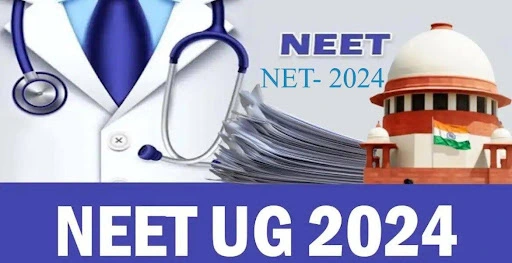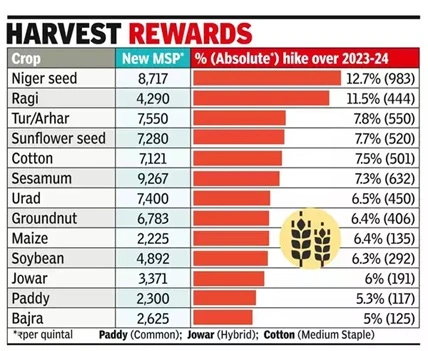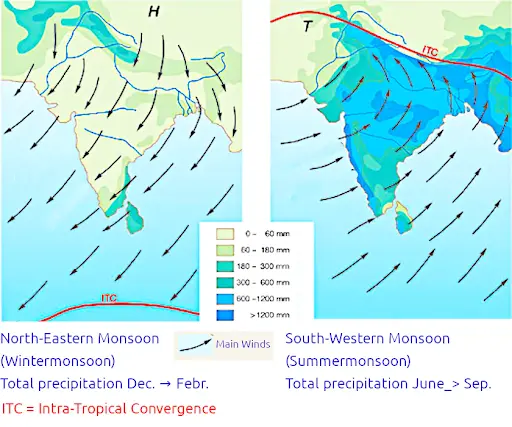Monday, 24th June 2024
Refugee Crisis in India
Why in the news ?
- Recently,fearing "aerial bombardment and attacks," around 5,400 people from Myanmar have sought refuge in Manipur's Kamjong district.
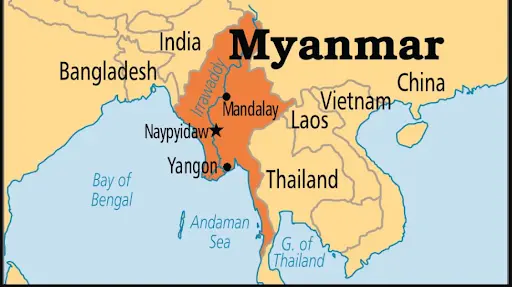
About Kamjong District:
- Location: Kamjong district shares its eastern border with Myanmar.
- Neighbouring Districts: To the west are Thoubal and Kangpokpi districts, dominated by Meiteis and Kuki-Zos respectively.
- Post-2021 Coup Migration: Since the 2021 military coup in Myanmar, many people have crossed over to Mizoram and Manipur due to shared ethnic ties with the local populations.
- India and Myanmar share an unfenced border; however, earlier this year, the Union Home Minister announced the suspension of the Free Movement Regime (FMR) with Myanmar.
- The Assam Rifles are deployed along the Myanmar border.
Refugee Crisis in India:
- Afghan Refugees:
- Cause: The resurgence of the Taliban in Afghanistan has led to an influx of Afghan refugees seeking safety and asylum in India.
- Demographics: Many of these refugees are Sikhs and Hindus facing religious persecution.
- Rohingya Crisis:
- Cause: Rohingya Muslims from Myanmar have sought refuge in India due to ethnic violence and persecution in Myanmar’s Rakhine State.
- Government Stance: India has been grappling with their status, with the government taking a firm stance on their deportation.
- Tibetan Refugees:
- Cause: Tibetans have been living in India since the 1959 Tibetan uprising against Chinese rule.
- Status: They are granted refugee status and live primarily in settlements in states like Himachal Pradesh and Karnataka.
India's Policy on Refugees:
- Non-Signatory Status: India is not a signatory to the 1951 UN Convention relating to the Status of Refugees and the 1967 Protocol.
- Foreigners Act of 1946: Section 3: Empowers the Central government to detect, detain, and deport illegal foreign nationals.
- Passport (Entry into India) Act, 1920: Section 5: Authorities can forcibly remove an illegal foreigner under Article 258(1) of the Constitution of India.
- Registration of Foreigners Act of 1939: All foreign nationals (excluding Overseas Citizens of India) visiting India on a long-term visa (more than 180 days) must register with a Registration Officer within 14 days of arrival.
- Citizenship Act, 1955: Covers renunciation, termination, and deprivation of citizenship.
- Citizenship Amendment Act, 2019 (CAA): Seeks to provide citizenship to Hindu, Christian, Jain, Parsi, Sikh, and Buddhist immigrants persecuted in Bangladesh, Pakistan, and Afghanistan.
- Illegal Immigrants: According to the Ministry of Home Affairs, foreign nationals who enter the country without valid travel documents are treated as illegal immigrants.
Challenges Faced by India due to Influx of Refugees:
- Resource Strain: Hosting refugees increases the demand for resources such as food, water, housing, and healthcare, particularly in regions where infrastructure is already overburdened.
- Legal and Administrative Concerns: The absence of a comprehensive legal framework for refugees in India leads to difficulties in determining their legal status and providing access to essential services like education and employment.
- Social Cohesion: The presence of large numbers of refugees can strain social cohesion, potentially causing tensions with local communities, especially when resources are perceived as limited.
- Security Concerns: The influx of refugees raises security concerns, including the potential infiltration of extremist elements and challenges in monitoring movements across porous borders.
- Diplomatic Relations: Hosting refugees can complicate diplomatic relations with neighbouring countries or countries of origin, particularly in cases of geopolitical tensions or disputes.
- Integration Issues: Integrating refugees into Indian society is difficult due to language barriers, cultural differences, and the lack of specific programs or policies designed for their integration.
- Economic Impact: Refugees often compete for low-skilled jobs, affecting the local job market. Additionally, their potential economic contributions through entrepreneurship or labour are frequently underutilised.
Way Ahead:
- Refugee Status Determination: Develop clear procedures for determining refugee status and provide appropriate legal protections.
- Access to Rights: Guarantee refugees access to essential rights such as education, healthcare, and employment.
- Regional Collaboration: Collaborate with neighbouring countries and international organisations to manage refugee flows and share responsibilities.
- Bilateral Agreements: Enhance diplomatic relations to facilitate the safe return or resettlement of refugees.
- Empowerment Initiatives: Encourage initiatives that economically and socially empower refugees, such as vocational training and language education.
- Conflict Resolution: Tackle the root causes of displacement through diplomatic efforts and support for peacebuilding initiatives.
|
UPSC Civil Services Examination, Previous Year Question: Prelims Q.:1 Consider the following pairs: (2016) Community sometimes in the affairs of mentioned in the news
Which of the pairs given above is/are correctly matched?
Ans- (c) |
Source: TH
India’s Space Economy
Why in the news?
- Recently, the Indian Government said that the country’s share in the global space economy is projected to increase fourfold by 2030 compared to 2021.
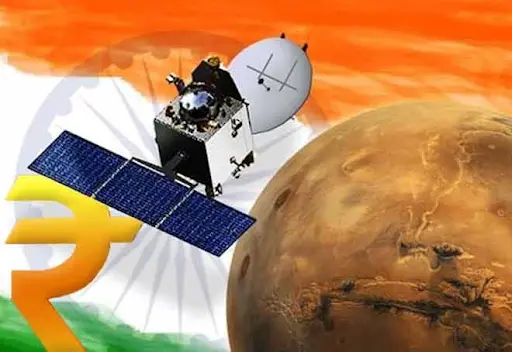
About India’s Space economy:
- India has established itself as a pioneer in space exploration, evolving from transporting rocket parts on bullock carts to achieving milestones like launching a record number of satellites in a single mission.
Present Status:
- According to a report by the World Economic Forum and McKinsey, the global space industry was valued at $630 billion in 2023 and is projected to grow at a rate of 9% annually, reaching $1.8 trillion by 2035.
- India's space economy, valued at $8.4 billion in 2023, currently represents approximately 2-3% of the global space economy.
- India has earned $174 million from launching foreign satellites, with $157 million of that total earned over the past nine years alone.
Importance and Achievements:
- ISRO has established itself as a reliable global player in satellite launches with its Polar Satellite Launch Vehicle (PSLV) and Geosynchronous Satellite Launch Vehicle (GSLV) series.
- India has achieved milestones in advanced technologies with successful missions like Chandrayaan-3, Aditya-L1, and XpoSat. Notably, the Mars Orbiter Mission (Mangalyaan) in 2013 made India the first nation to reach Martian orbit on its maiden attempt.
- India's Space Technology has widespread applications across sectors such as Disaster Management, SVAMITVA, PM Gati Shakti, Railways, Highways, Smart Cities, Agriculture, Water Mapping, Telemedicine, and Robotic Surgery.
- The Indian Regional Navigation Satellite System (IRNSS), or NavIC, provides precise positioning information across India and its surrounding regions.
|
Upcoming missions:
|
Challenges:
- ISRO operates on a constrained budget compared to other major space agencies, limiting the scale and frequency of its missions and launches.
- India's satellite manufacturing and testing infrastructure is less extensive and advanced than that of the USA and European nations.
- Regulatory frameworks and bureaucratic processes can hinder private sector growth and innovation in the space sector.
- Indian entities, including ISRO and private companies, face challenges competing globally due to resource limitations and technology gaps.
Initiatives:
- The Indian Space Policy 2023 allows Non-Governmental Entities (NGEs) to participate comprehensively in all aspects of space activities.
- The Indian National Space Promotion and Authorization Centre (IN-SPACe) was established to facilitate private sector engagement in space ventures.
- India now hosts nearly 200 private space startups, which have emerged since the sector was opened up, with some transforming from earlier roles into entrepreneurs.
- Private space startups have invested over Rs. 1,000 crore in the current financial year (April-December 2023).
- NewSpace India Limited (NSIL), operating under the Department of Space (DoS), serves as ISRO's commercial arm, assisting NGEs in commercialising space technologies and platforms.
- Amendments to the Foreign Direct Investment (FDI) policy permit 100% FDI for satellite manufacturing, satellite data products, and ground and user segments, with up to 74% allowed through the automatic route, subject to government approval beyond 74%.
Way Forward:
- India's space sector, leveraging ISRO, NSIL, IN-SPACe, and its startup ecosystem, aims to excel globally and innovate for societal benefits.
- Government support is crucial as space tech entrepreneurs initiate private sector participation, pivotal for India's space economy success.
- Strategic investments in infrastructure, manufacturing, innovation, and education are pivotal for India to achieve a US$44 billion space economy by 2033, reinforcing global leadership in space technology.
|
UPSC Civil Services Examination, Previous Year Question (PYQ) Mains Q.1 What is India’s plan to have its own space station and how will it benefit our space programme? (2019) Q.2 Discuss India’s achievements in the field of Space Science and Technology. How the application of this technology helped India in its socio-economic development? (2016) |
Source: AIR
Centre notifies new Telecom Act
Why in the news ?
- Recently, the Centre has partially notified the Telecommunications Act, making provisions including sections 1, 2, 10, and 30 effective from June 26.
- The Telecom Bill was passed in December 2023 by the Indian Parliament.

What are the Key Provisions of Telecommunications Act, 2023?
- Authorization and Licensing Requirements:
- Prior central government authorization is mandatory for telecommunication services or networks.
- Existing licences remain valid for their period or up to five years.
- Spectrum Allocation and Usage:
- Spectrum assigned via auctions, except for national security, disaster management, and satellite services.
- Government can re-purpose frequencies and allows spectrum sharing, trading, leasing, and surrender.
- Satellite Internet Provision:
- Legislation allocates spectrum to satellite internet providers like OneWeb and Starlink.
- Active authorizations granted to OneWeb and Jio for satellite-based internet.
- Surveillance and Suspension Powers:
- Government can intercept, monitor, or block messages for public safety or emergencies.
- Telecom services can be suspended and infrastructure temporarily possessed during emergencies.
- Regulation and Standards:
- Central government prescribes standards for telecom equipment and infrastructure.
- Amendments to TRAI Act require chairpersons and members to have extensive professional experience.
- Chairpersons need 30 years of experience and board-level or CEO experience; members need 25 years.
- Digital Bharat Nidhi and OTT Services:
- USOF was retained as Digital Bharat Nidhi for research and development.
- OTT services excluded from the Telecom Act, regulated under the potential Digital India Act, 2023.
- Legal Offences and Penalties:
- Bill specifies criminal and civil offences, including unauthorised telecom services and term breaches.
- Penalties range from fines to imprisonment, adjudicated by designated officers and committees.
- National Security Measures:
- Post-2020 India-China conflict measures integrated, preventing telecom equipment imports from adversarial nations.
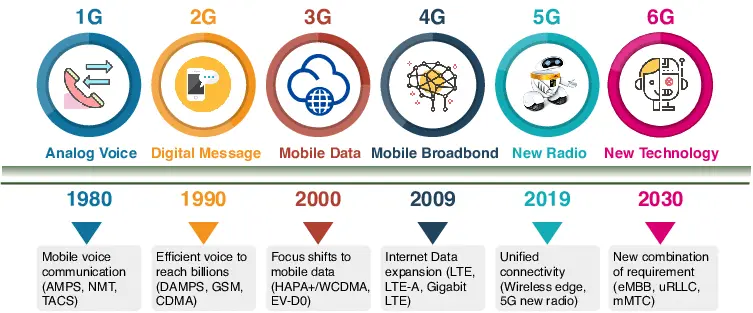
What are the Merits and Demerits of the Telecommunications Act, 2023?
Merits:
- Shifts to New Paradigms:
- The Telecommunication Act 2023 replaces outdated acts, accommodating the evolving landscape of human-human, human-machine, and machine-machine communications.
- Navigates Different Communication Technologies:
- The Act navigates generations of communication technologies, including voice calls, messaging, video calls, wearables, and Industry 4.0.
- It anticipates the integration of AI, IoT, and quantum computing in future communications.
- Forward Steps:
- Emphasises promoting competition and mobilising resources for infrastructure upgrades in a debt-laden industry.
- Technology Neutrality in Spectrum Use:
- Advocates for technology neutrality in spectrum use, ensuring telecom services are not defined by technology type.
- Ensures non-discriminatory, non-exclusive access to infrastructure for new market entrants on commercial terms.
- Regulatory Convergence for Digital Technologies:
- Addresses the convergence of telecommunications and the internet, stressing the need for regulatory convergence.
- Acknowledges the challenge of fragmented oversight over converged services, questioning the efficacy of separate licences and administrative departments.
Demerits:
- Contested Provisions and Privacy Concerns:
- The Act does not adequately address concerns about government powers during safety standards and emergencies, potentially infringing on privacy with limited accountability.
- Balancing safety with privacy is a critical concern for governing officers.
- Challenges in 5G/6G Implementation:
- India faces challenges in 5G adoption due to unattractive use cases, poor monetization, and insufficient infrastructure investment.
- Reliance Jio and Bharti Airtel's commitment to reducing capex post-2023-24 raises concerns.
- The Act lacks a specific approach to promote 5G and 6G infrastructure development in a timely manner.
What Government Initiatives to Improve the Telecom Sector In India?
- Prime Minister Wi-Fi Access Network Interface (PM-WANI)
- Objective: Enhance internet access and connectivity.
- Implementation: Public data offices (PDOs) set up nationwide.
- Cost: Provides free or affordable internet services.
- Infrastructure: Utilises existing Wi-Fi networks.
- Impact: Increases digital inclusion, especially in rural areas.
- Bharatnet Project:
- Objective: Provide high-speed broadband to rural India.
- Scope: Connects all Gram Panchayats (GPs) via optical fibre.
- Phases: Three phases for comprehensive coverage.
- Speed: Aims for minimum 100 Mbps speed.
- Reach: Targets 2.5 lakh GPs across the country.
- Production Linked Incentive (PLI):
- Objective: Boost domestic telecom equipment manufacturing.
- Incentives: Financial incentives for manufacturers.
- Focus Areas: Covers various telecom and networking products.
- Duration: Spread over five years.
- Impact: Aims to make India a global manufacturing hub.
- Bharat 6G Alliance:
- Objective: Research and development of 6G technology.
- Collaboration: Involves government, industry, and academia.
- Innovation: Focuses on future telecom technologies.
- Strategy: Prepares India for 6G deployment by 2030.
- Global Leadership: Aims to position India as a leader in 6G.
Conclusion
Hence, India's telecom sector expansion is crucial for digital transformation. The Telecommunications Act, 2023 aims to foster service competition, shift to fibre-based networks, and promote technological dynamism, focusing on tangible progress and ushering in a new telecommunications era.
|
UPSC Civil Services Examination Previous Year Question (PYQ) Prelims Q:1 In India, which of the following reviews the Independent regulators in sectors like telecommunications, insurance, electricity, etc.? (2019)
Select the correct answer using the code given below:
Ans: (a) Q:2 In India, the term “Public Key Infrastructure” is used in the context of (2020)
Ans: (a) Q:3 Which of the following is/are the aims/aims of the “Digital India” Plan of the Government of India? (2018)
Select the correct answer using the code given below:
Ans: (b) |
Source: TH
IBBI proposes amendments to insolvency rules
Why in the news ?
- Recently, the Insolvency and Bankruptcy Board of India (IBBI) has proposed amendments to the Insolvency Resolution Process for Corporate Process regulations.
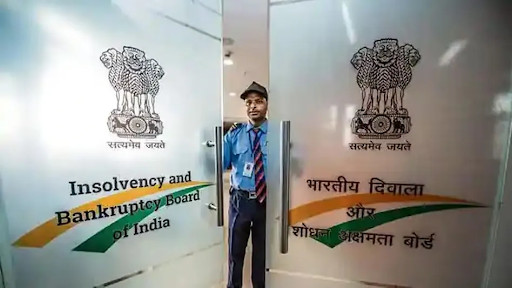
- These amendments aim to enhance efficiency, reduce costs, and increase transparency in the Corporate Insolvency Resolution Process (CIRP), benefiting creditors and other stakeholders.
What is the Insolvency and Bankruptcy Code (IBC)?
- Insolvency vs. Bankruptcy
- Insolvency: Results from an inability to pay debts due to a lack of assets.
- Bankruptcy: Occurs when an application is presented to an authority declaring insolvency and requesting to be declared bankrupt.
- About the IBC 2016:
- Purpose: The bankruptcy law of India, aimed at consolidating the existing framework into a single law for insolvency and bankruptcy.
- Efficiency: Provides a one-stop solution for resolving insolvencies, replacing the previously lengthy and economically unviable process.
- Protection: Aims to protect the interests of small investors and simplify the process of doing business.
What is the Insolvency and Bankruptcy Board of India (IBBI)?
- It regulates insolvency proceedings and oversees entities such as Insolvency Professional Agencies (IPA), Insolvency Professionals (IP), and Information Utilities (IU) in India.
- Established on October 1, 2016, it was given statutory powers through the IBC 2016.
- Operating under the Ministry of Corporate Affairs, it covers individuals, companies, limited liability partnerships, and partnership firms.
What is the Process Followed under the IBC?
- When a corporate debtor (CD) defaults on loan repayment, either the creditor or the debtor can initiate a Corporate Insolvency Resolution Process (CIRP) under Section 6 of the IBC.
- Previously, the minimum default amount for applying for insolvency was ₹1 lakh, but due to pandemic-related stress on companies, the government raised it to ₹1 crore.
- To apply for insolvency, one must approach an adjudicating authority (AA) as specified by the IBC. Various benches of the National Company Law Tribunal (NCLT) across India serve as the designated AAs.
- The Tribunal has 14 days to admit or reject the application, or it must provide a reason for any delay in admission. Once the application is admitted by the AA, the CIRP begins.
- The mandatory deadline for completing the resolution process is 330 days.
What is the Recent Proposal of IBBI?
- Comprehensive Valuation Report for Corporate Debtor:
- Proposal: The IBBI suggests that a registered valuer should submit a comprehensive valuation report for the corporate debtor as a whole, rather than separate valuations for different asset classes.
- Single Valuer for Small Entities: For companies with assets up to ₹1,000 crore and MSMEs, the board proposes appointing only one registered valuer for fair value and liquidation value estimates. Due to complexity, two valuers can be appointed if necessary.
- Interim Resolution Professional:
- Proposal: To prevent delays in appointing authorised representatives (AR) for creditors, the IBBI proposes allowing the interim resolution professional to make these appointments.
- Issue of Release of Guarantees in the Resolution Plan:
- Proposal: Any proposal by the applicant will not extinguish creditors' rights to proceed against guarantors and enforce the realisation of guarantees governed through various agreements.
- Significance of These Proposals:
- Consistency: These proposals aim to eliminate inconsistencies between the CIRP regulations and the Companies (Registered Valuers and Valuation) Rules.
- Efficiency: These measures will reduce CIRP costs and expedite the process for small entities.
|
UPSC Civil Services Examination, Previous Year Question (PYQ) Prelims Q:1 Which of the following statements best describes the term ‘Scheme for Sustainable Structuring of Stressed Assets (S4A)’, recently seen in the news? (2017)
Ans: (b) |
Source: TH
Pink Sand in Australia
Why in the news :
- Recently, Australian researchers have discovered that pink garnet sand on South Australian beaches originates from ancient Antarctic mountains.

- The research has provided new insights into the timing of the subduction of the Australian tectonic plate beneath the Pacific plate and has revealed the existence of previously unknown ancient mountains in Antarctica.
Pink Sand in Australia Beaches: Composition
- The pink sand is composed of a mineral called garnet. Garnet is rare in beach sand, as it is destroyed by prolonged exposure to the waves and currents of the ocean.
- It requires high temperatures to form and is usually associated with formation of large mountain belts.
- In Australia, Garnet is known to have formed locally during the Delamerian orogeny, an event which created the Adelaide Fold Belt around 514–490 million years ago, and during the formation of the Gawler Craton in western South Australia between 3.3–1.4 billion years ago.
Possible Sources of Garnet in Australia:
- Kimberlite Pipes:
- Garnets can reach the surface via carrot-shaped volcanic structures called kimberlite pipes (found in South Australia, e.g. at Eurelia).
- However, these deposits are far from the coast, are not very abundant, and are only around 170–190 million years old, thus unlikely to be the source of beach garnets.
- Prolonged Erosion of Adelaide Fold Belt:
- Garnet typically forms in greater volumes in places where the crust is thick, such as under mountains.
- As the mountains erode, the garnet may be revealed as a record of the former mountain belt.
- The erosion of the Adelaide Fold Belt, which stretched north from Adelaide for hundreds of kilometres, developed between 514 million and 490 million years ago, could be another possible source.
- Gawler Craton:
- It is a huge slab of ancient rock beneath South Australia with outcrops in the Adelaide Fold Belt.
- It contains plenty of garnet that formed in several episodes between 3.3 billion-1.4 billion years ago.
- Result of the new findings:
- Recent research found that most garnets formed around 590 million years ago.
- Thus, the beach sand garnets were far too young to have come from the Gawler Craton, but too old to have come from the eroding Adelaide Fold Belt.
- Garnet dating to the same period has been found previously in an outcrop in the Transantarctic Mountains in East Antarctica.
- Ice-flow indicators along South Australia Shorelines reveal that the garnet-rich glacial sands were brought to Australia by a north-west moving ice sheet during the Late Palaeozoic Ice Age, when Australia and Antarctica were connected in supercontinent Gondwana.
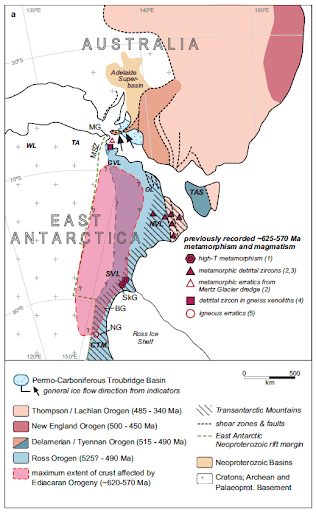
-
- The garnet deposits were then locally stored in glacial sedimentary deposits along the southern Australian margin until erosion liberated them and waves and tides concentrated them on the South Australian beaches.
Source: (TH)
Indian policy on Myanmar outlined
Why in the news?
- Despite ongoing violence by Myanmar's military, India maintains formal relations three years after the 2021 coup, with reported killings, injuries, and displacements of its people.
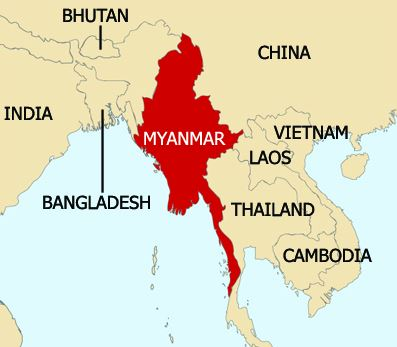
India-Myanmar Relations:
- Engagement with Junta: Despite the 2021 military coup, India maintains formal relations with Myanmar's junta.
- Policy Justification: Indian foreign policy scholars argue that engaging with the junta protects India’s strategic interests in Myanmar.
- Lack of Engagement with Pro-Democracy Forces: The Narendra Modi government has not actively engaged with Myanmar’s pro-democracy resistance.
Stepping Out of China’s Shadow:
- Balancing Values and Interests: India’s Myanmar policy should integrate progressive values with strategic interests, leveraging democratic principles for regional influence.
- Federal Democracy Model: India can promote its federal democracy model to support Myanmar’s democratic resistance seeking a federal constitution.
- Capacity-Building and Exchange: India can assist Myanmar’s pro-democracy forces through capacity-building programs, distinguishing itself from China's approach.
Weapons Sales and Humanitarian Outreach:
- Ceasing Weapons Sales: India should halt the sale of military hardware to Myanmar’s military, which reportedly uses these weapons against civilians.
- Establishing Humanitarian Corridors: Open humanitarian corridors in conflict-affected regions like Sagaing Region, Chin State, and northern Rakhine State to facilitate aid delivery.
- Lift Border Fencing Plans: Suspend the plan to fence the India-Myanmar border to ease the movement of humanitarian aid and assistance.
- Collaboration with NGOs: Partner with local and international NGOs to ensure humanitarian aid reaches affected populations without interference from the Myanmar junta.
Detention of Asylum Seekers:
- Halting Deportations: India should stop deporting asylum seekers from Myanmar, given the risks they face back home.
- Upholding International Principles: Adhere to non-refoulement principles to protect refugees from deportation to unsafe conditions.
- Ensuring Humane Treatment: Treat asylum seekers as refugees entitled to humanitarian assistance, including releasing detained Chin refugees in Assam and providing suitable shelter.
Conclusion:
Hence, India has a pivotal opportunity to bolster Myanmar's pro-democracy movement by leveraging its federal democratic model and initiating capacity-building and knowledge exchange programs. This proactive approach can foster democratic ideals and strengthen regional stability.
|
UPSC Civil Services Examination, Previous Year Questions (PYQs) Mains Q:1 Cross-border movement of insurgents is only one of the several security challenges facing the policing of the border in North-East India. Examine the various challenges currently emanating across the India-Myanmar border. Also, discuss the steps to counter the challenges. (2019) |
Source: TH
World Investment Report 2024
Why in the news ?
- Recently, The World Investment Report 2024 was released by the UN Conference on Trade and Development (UNCTAD).

Key findings:
- Global foreign direct investment (FDI) fell by 2% to $1.3 trillion in 2023 amid an economic slowdown and rising geopolitical tensions.
- FDI flows in Europe jumped from negative $106 billion in 2022 to positive $16 billion because of volatility in conduit economies. In contrast, in Africa, it declined by 3%, in Asia by 8% and in Latin America and the Caribbean by 1%.
- FDI in critical minerals nearly doubled. Infrastructure and digital economy sectors witnessed lower investment.
- International investment in sectors relevant for the Sustainable Development Goals in developing countries declined in 2023.
- The sustainable finance market continues to grow, but there are clear signs of a slowdown. Greenwashing poses the most significant challenge to the sustainable fund market.

|
UN Conference on Trade and Development:
|
Source: DTE
World’s oldest termite mound found in South Africa
Why in the news ?
- Recently, Scientists have discovered the world’s oldest inhabited termite mounds along the Buffels River in Namaqualand, South Africa.
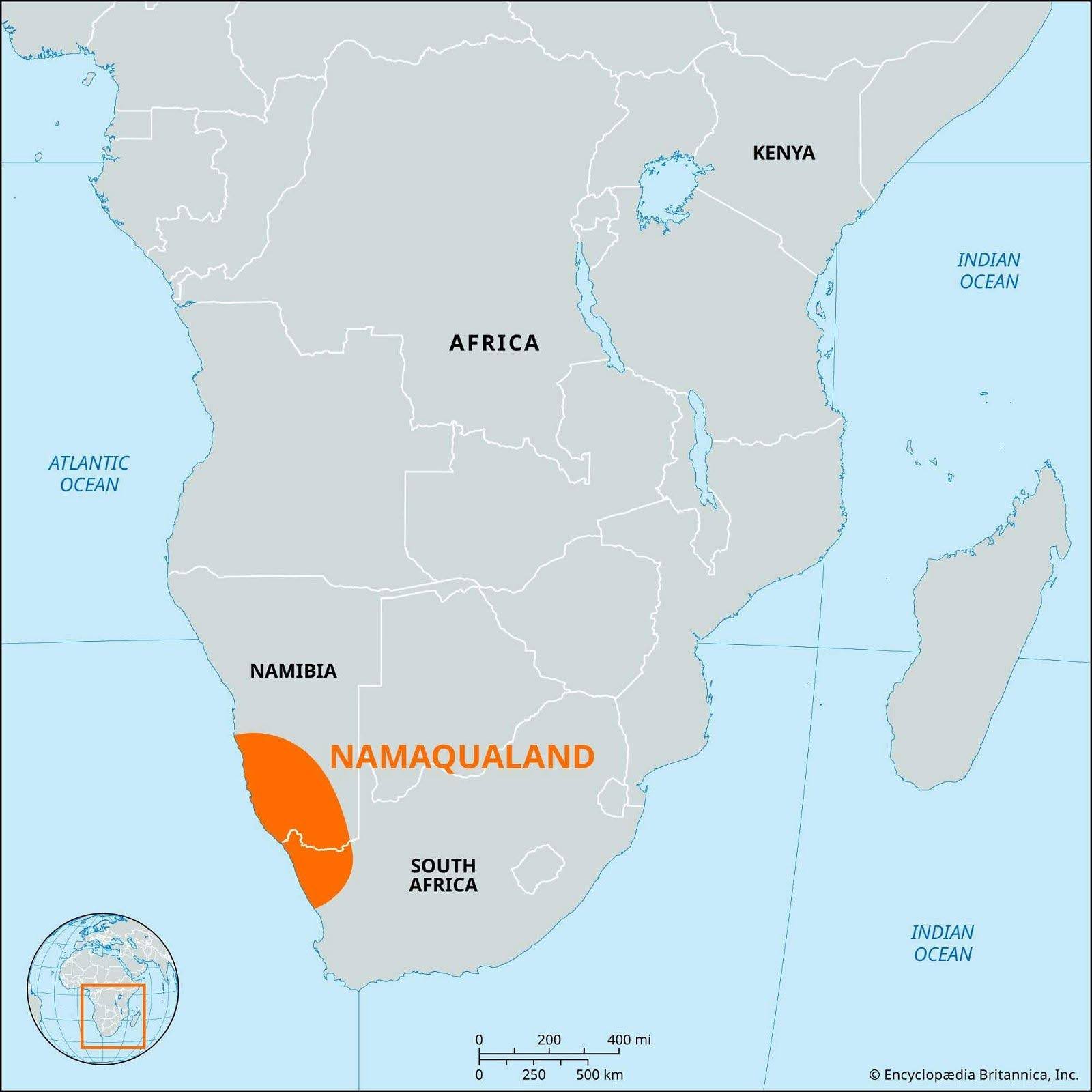
- Namaqualand is a global biodiversity hotspot renowned for its spring flowers, but it is a dry area. Surface water is in short supply, and the groundwater is saline.
- The termite mounds, called ‘heuweltjies’ in Afrikaans (meaning ‘little hills’) are inhabited by the southern harvester termite, Microhodotermes viator.
- Radiocarbon dating of the organic carbon within these mounds has shown ages ranging from 13,000 to 19,000 years, while the carbonate dates back up to 34,000 years.
- This makes the Buffels River mounds the oldest active termite mounds with both organic & inorganic carbon. The previous oldest inhabited mounds from different species from Brazil are 4000 years old.
- During the formation of heuweltjies, the region experienced significantly more rainfall. The wetter climate allowed for minerals such as calcite and gypsum to dissolve and move down to the groundwater.
Carbon sequestration by termites:
- The insects transport organic material, e.g. small sticks, deep into the soil, leading to continuous renewal of soil carbon reservoirs at depth, where they are preserved for longer periods.
- The tunnels also allow dissolved inorganic carbon (known as soil calcite or calcium carbonate) in the mound soil to move into the groundwater along with other soluble minerals thus sequestering CO2 through dissolution and leaching of soil carbonate-bicarbonate to groundwater.
Source: TH
School in a Box Initiative
Why in the news ?
- Recently, the Assam State Disaster Management Authority (ASDMA), in partnership with UNICEF, is distributing "School in a Box" kits to children aged 6-18 in flood-affected relief camps.

About the initiative:
- The "School in a Box" kits contain essential learning materials aimed at maintaining educational continuity for children amidst displacement and trauma caused by devastating floods and landslides in Assam.
- Initially targeted at children up to 6 years old, the program has expanded to include older children, offering notebooks, drawing books, pencils, and other educational resources.
Benefits of the "School in a Box" Initiative:
- Educational Continuity of Children: Ensures uninterrupted education for children despite displacement, maintaining a sense of normalcy.
- Developmental Support: Provides age-appropriate learning materials that support cognitive and emotional development across different age groups.
- Empowerment: Equips children with knowledge and skills, empowering them to rebuild their lives and contribute to community recovery.
- Community Building: Fosters a sense of community and support among children and families in relief camps, promoting connection and sharing.
- Resilience Building: Contributes to building resilient communities by ensuring educational continuity, enhancing their ability to recover from future disasters.
- Positive Impact: Demonstrates commitment to child welfare and education, enhancing public perception and support for relief efforts
Source: TH
India's position with respect to the G-7
Context:
- Recently, leaders from the Group of Seven (G7) countries, which include the U.S., Canada, Germany, France, Japan, the U.K., and Italy, convened in Apulia, Italy, from June 13-15. The
- European Union leadership also participated in the summit. India, invited 11 times to this event, saw Prime Minister Narendra Modi attend for the fifth time.
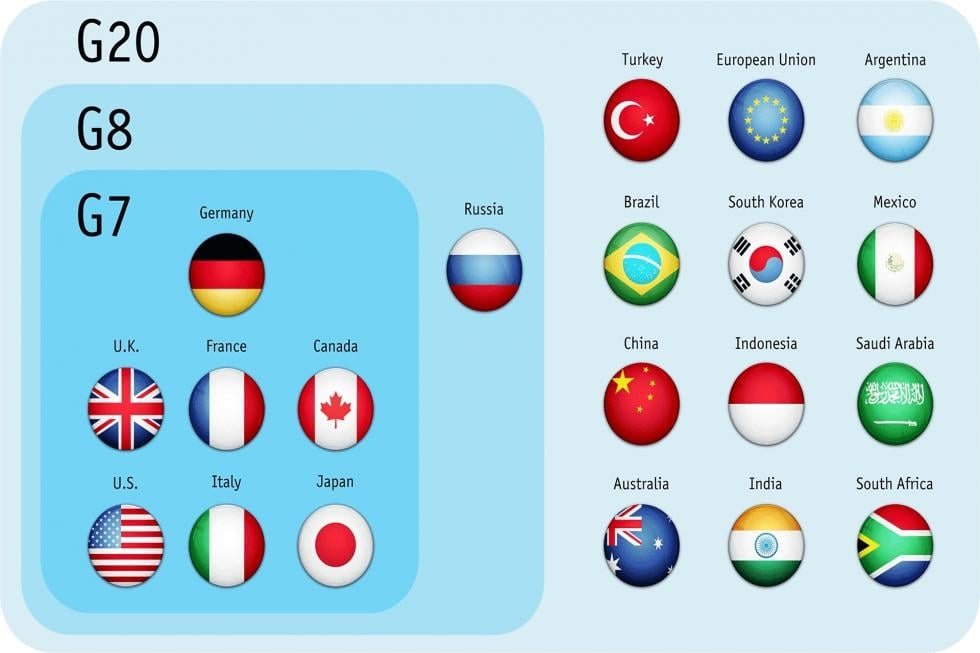
- The G7 leaders gathered to address key global issues, including bridging the gap between the "West and the Rest," funding the Ukraine war, investing in Africa, and tackling migration, climate change, and artificial intelligence.
- They agreed to allocate $50 billion for Ukraine using Russia's frozen assets and held a summit focused on promoting clean energy in Africa.
- They criticised China's trade practices and engaged with leaders from 10 countries, including India, to discuss concerns of the Global South.
About the Group of Seven (G7):
- Origin of G7:
- The G7 originated in response to the 1973 oil shocks and the subsequent financial crisis.
- To address these challenges, the heads of six leading industrial nations— the US, UK, France, West Germany, Japan, and Italy—held a meeting in 1975.
- Canada joined in 1976, officially forming the G7.
- Current Members:
- The current G7 members are the US, UK, Canada, France, Germany, Italy, and Japan, representing some of the world's most developed and advanced economies.
- Russia joined in 1997, but it was renamed as G7 after Russia was expelled as a member in 2014 following its annexation of the Crimea region of Ukraine.
- The European Union is also represented within the G7.
- Significance:
- Wealth: Control 60% of global net wealth
- Growth: Drive 46% of global GDP
- Population: Represents 10% of the world's population.
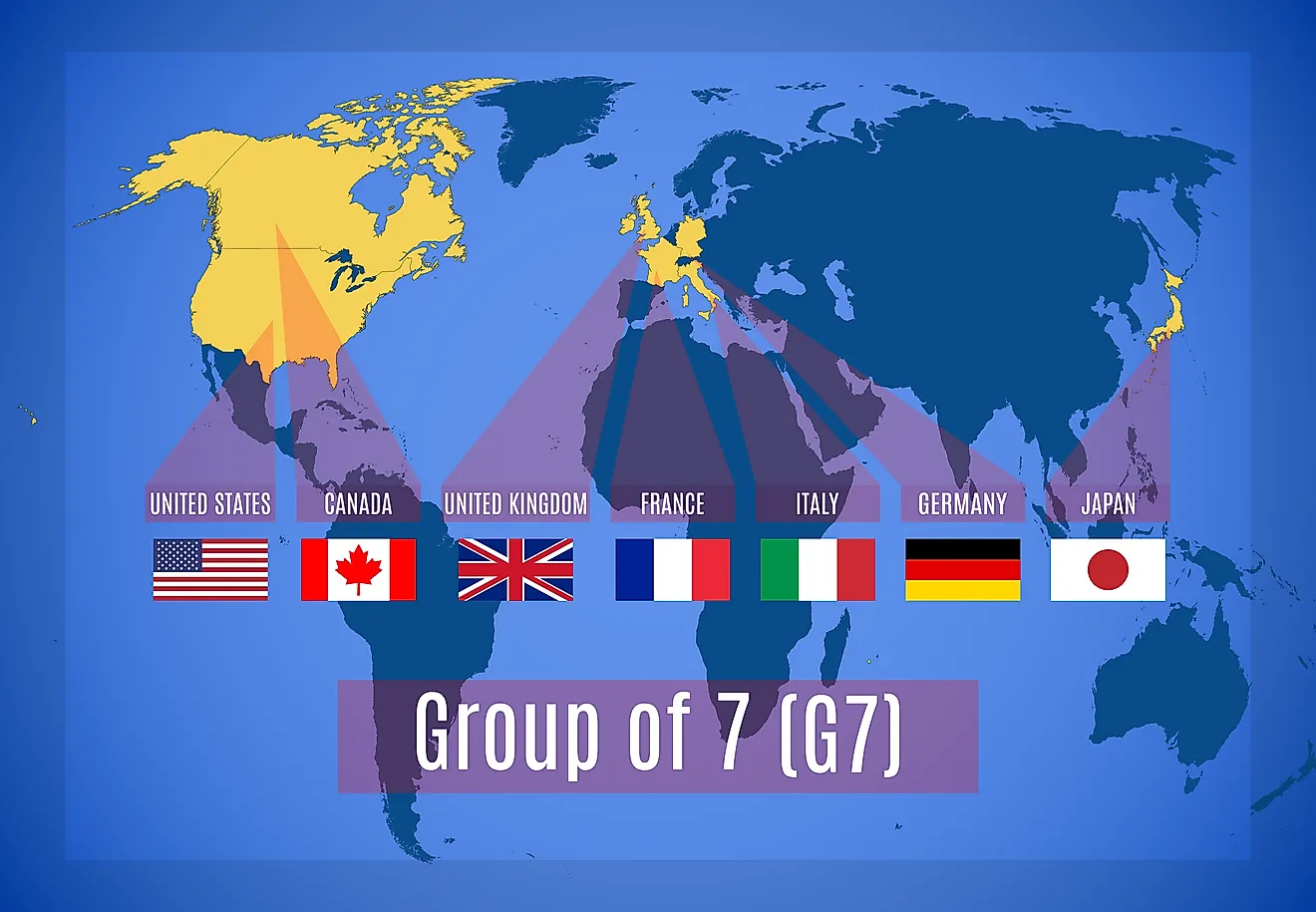
Significance of India for G7:
- India’s Role in the G-7 Process:
- India has been a significant part of the G-7 process for years, gaining attention in the 2000s for its steady growth during the global financial crisis.
- Though not a G-7 member, India is a key Global South member and has hosted the "Voice of Global South" conference since 2023.
- Part of G-20 Troika:
- India is part of the G-20 troika with Brazil and South Africa, enhancing its strategic importance in global economic and political discussions.
- Economic Growth and Stability:
- India gained attention from the G7 in the 2000s due to its steady economic growth during the global financial crisis, demonstrating its resilience and potential as a major economy.
- Strategic Partnerships:
- India’s role in the G-20 troika with Brazil and South Africa adds to its strategic importance in global forums.
- Regional Stability and Development:
- India’s involvement in G7 outreach efforts contributes to regional stability and development through investments and cooperation in areas like clean energy, trade, and economic development.
- Geopolitical Balance:
- India’s participation helps balance global geopolitical dynamics, especially amidst rising concerns about China’s influence and trade practices.
- India’s strategic position and partnerships are crucial for maintaining global stability.
Significance of G7 for India:
- Highlighting Achievements:
- The G-7 outreach session is a crucial platform for India to showcase its achievements and perspectives.
- During the session, PM Modi emphasised the importance of Indian elections, technology, artificial intelligence, and climate change.
- Economic Significance:
- The G7 nations account for nearly 60% of global net wealth ($317 trillion as of 2018).
- They represent 30% of global GDP and about 770 million people, or 10% of the world's population.
- Political Significance:
- The G7 can shape responses to multilateral challenges.
- In 1999, it created the Financial Stability Forum to manage the international monetary system.
- The 47th summit in June 2021 focused on COVID-19 recovery, promising 1 billion vaccines to poorer countries with the theme "Global Action to Build Back Better."
- Developmental Significance:
- In 1997, the G7 provided $300 million to contain the Chernobyl reactor meltdown.
- In 2002, it played a crucial role in setting up a global fund to fight malaria and AIDS.
- In October 2020, G7 finance ministers backed the G20 bilateral debt relief initiative for the world's poorest countries.
- Advocacy for the Global South:
- India uses the G7 platform to advocate for Global South concerns like economic inequality, climate change, and resource security.
- This ensures that developing nations' voices are heard in global decision-making processes.
- Technological and Climate Initiatives:
- India’s participation in G7 discussions on technology and climate change allows it to contribute to and benefit from global initiatives.
- It provides an opportunity for India to share its innovations and approaches.
- Showcasing Democratic Values:
- By participating in the G7, India reinforces its commitment to democratic values and principles.
- This aligns India with other major democracies and highlights the importance of democratic governance on the global stage
Criticism faced by G7:
- Elitist, Non-Inclusive Group:
- The G-7 is criticised for being elitist and non-inclusive, excluding three of the world's top 10 economies: China, India, and Brazil.
- Unlike the G-20, the G-7 lacks representation from a broader spectrum of the world.
- Membership Issues:
- The G-7 has not expanded its membership, even reducing it by dropping Russia in 2014.
- In contrast, BRICS has expanded to include the UAE, Saudi Arabia, Iran, Egypt, and Ethiopia, alongside Brazil, Russia, India, China, and South Africa.
- Challenges to Relevance:
- The G-7's inability to influence Russia’s invasion of Ukraine, stop Israel’s bombardment of Gaza, or deter China’s global economic influence raises questions about its relevance and effectiveness.
- Future Uncertainty:
- The G-7’s future effectiveness is uncertain, especially with potential leadership changes due to upcoming elections in the U.K. and the U.S.
- The next G-7 summit will be in Alberta, Canada, in 2025, and it remains to be seen if India will continue to participate on the sidelines.
Conclusion:
Hence, India's economic strength, strategic role in the Indo-Pacific, involvement in the European energy crisis, and potential for conflict mediation add immense value to the G7 Summit. As the global order evolves, collaboration with India will be essential for shaping future international cooperation.
|
UPSC Civil Services Examination, Previous Year Questions (PYQs) Prelims Q:1 The term ‘Intended Nationally Determined Contributions’ is sometimes seen in the news in the context of (2016)
Answer: (b) Q:2 With reference to the Agreement at the UNFCCC Meeting in Paris in 2015, which of the following statements is/are correct? (2016)
Select the correct answer using the code given below.
Answer: (b) Q:3 In which one of the following groups are all the four countries members of G20? (2020)
Ans: (a) Mains Q:1 ‘Climate change’ is a global problem. How will India be affected by climate change? How Himalayan and coastal states of India are affected by climate change? (2017) Q:2 Describe the major outcomes of the 26th session of the Conference of the Parties (COP) to the United Nations Framework Convention on Climate Change (UNFCCC). What are the commitments made by India in this conference? (2021) |
Source:TH
Share the article
Edukemy’s Current Affairs Quiz is published with multiple choice questions for UPSC exams
MCQ
Get Latest Updates on Offers, Event dates, and free Mentorship sessions.

Get in touch with our Expert Academic Counsellors 👋
FAQs
UPSC Daily Current Affairs focuses on learning current events on a daily basis. An aspirant needs to study regular and updated information about current events, news, and relevant topics that are important for UPSC aspirants. It covers national and international affairs, government policies, socio-economic issues, science and technology advancements, and more.
UPSC Daily Current Affairs provides aspirants with a concise and comprehensive overview of the latest happenings and developments across various fields. It helps aspirants stay updated with current affairs and provides them with valuable insights and analysis, which are essential for answering questions in the UPSC examinations. It enhances their knowledge, analytical skills, and ability to connect current affairs with the UPSC syllabus.
UPSC Daily Current Affairs covers a wide range of topics, including politics, economics, science and technology, environment, social issues, governance, international relations, and more. It offers news summaries, in-depth analyses, editorials, opinion pieces, and relevant study materials. It also provides practice questions and quizzes to help aspirants test their understanding of current affairs.
Edukemy's UPSC Daily Current Affairs can be accessed through:
- UPSC Daily Current Affairs can be accessed through Current Affairs tab at the top of the Main Page of Edukemy.
- Edukemy Mobile app: The Daily Current Affairs can also be access through Edukemy Mobile App.
- Social media: Follow Edukemy’s official social media accounts or pages that provide UPSC Daily Current Affairs updates, including Facebook, Twitter, or Telegram channels.

